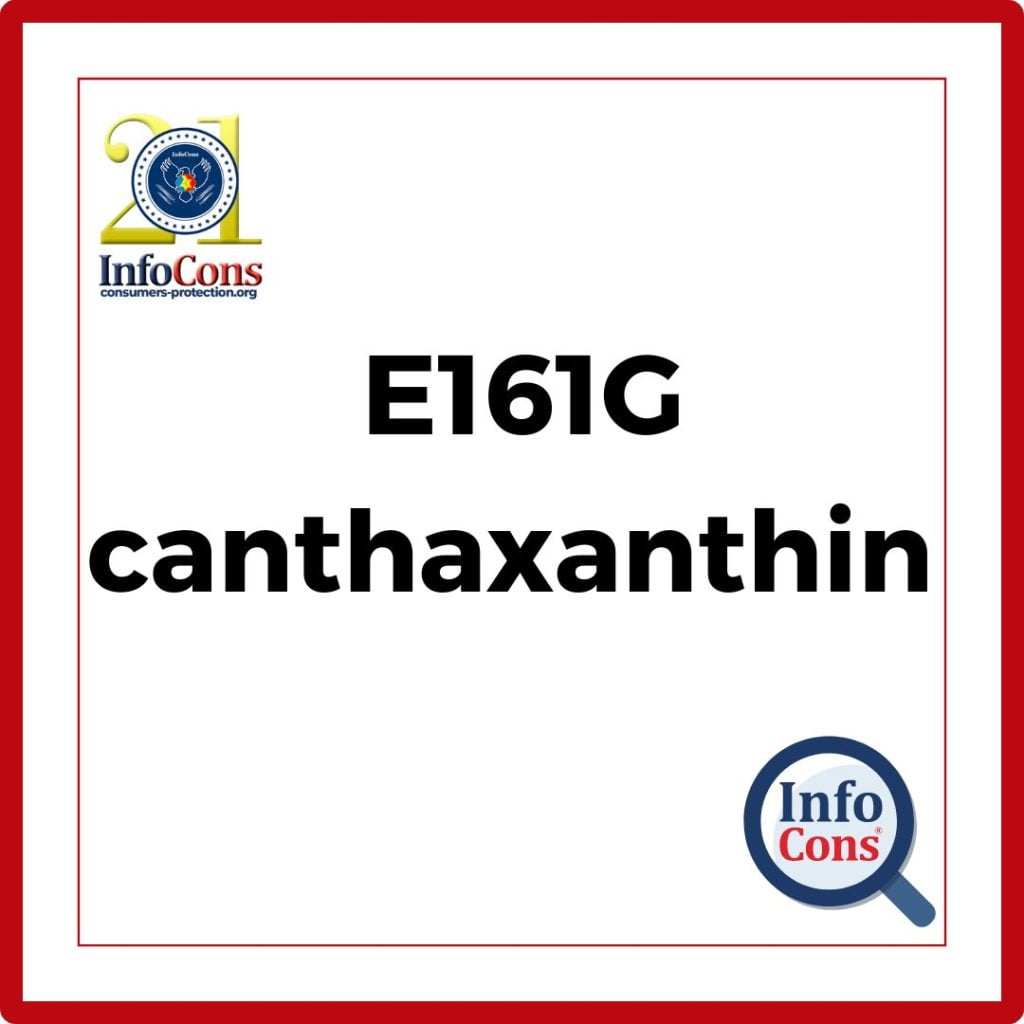What Is Food Additive E 161G?
E161G, also known as canthaxanthin, is notable for its unique properties and applications. This natural carotenoid is widely used in the food industry to impart vibrant hues to a variety of products.
Canthaxanthin, E161G, is a type of natural pigment found in many plants and some animals. It is responsible for the vibrant orange color of carrots, peppers, and flamingo birds, which acquire their pink hue from ingesting canthaxanthin-rich food sources such as algae and crustaceans.
Commercially, canthaxanthin can be extracted from certain mushrooms, such as chanterelles, algae, crustaceans, and even some species of birds and fish.
Read also – E160D – Lycopene
What Is the Recommended Daily Dose?
Due to its natural origin and the vibrant orange hue it imparts to foods, canthaxanthin is authorized as a food colorant in some countries, including the USA and European countries.
The use of canthaxanthin, E161G, as a food additive is regulated in the European Union, while in the United States, it is listed as a food additive only for certain applications. Regulatory bodies have established guidelines for its safe use, including acceptable daily intake levels and permissible concentrations in specific products.
The European Food Safety Authority (EFSA) has set a maximum recommended dose of 0.03 mg per kg body weight per day.
Did You Know: How to Choose Fruits and Vegetables at the Store
In Which Products Is E161G Found?
One of the primary uses of canthaxanthin is as a food colorant. It is added to a variety of products to enhance their visual appeal:
- Beverages: It is used in fruit juices and soft drinks to give them an attractive reddish or orange hue.
- Bakery Products: Canthaxanthin imparts a rich, appetizing color to cakes, pastries, and other baked goods.
- Dairy Products: It is commonly used in butter, margarine, and cheese to enhance their natural color.
- Meat and Fish: It is used to enrich the color of salmon, trout, and poultry, making them more appealing to consumers.
In addition to its role as a food colorant, canthaxanthin is also valued for its antioxidant properties, which help preserve the shelf life of food products by preventing oxidative damage.
Use of E 161G in Other Industries
- Cosmetics: It is used in a variety of cosmetic products, including tanning creams, both for its color and its potential skin benefits.
- Animal Feed: In the aquaculture industry, canthaxanthin is added to the feed of farmed fish, such as salmon and trout, to enhance the color of their flesh.
- Pharmaceuticals: Research is ongoing into the use of canthaxanthin in pharmaceuticals, particularly in the context of its antioxidant and anti-inflammatory properties.
Read also – E140 – Chlorophylls
Contraindications and Risks
Despite its benefits, E161G, canthaxanthin, is not without controversy. Excessive consumption of this food colorant has been associated with certain health risks:
- High doses of canthaxanthin can lead to the deposition of crystalline particles in the retina, a condition known as canthaxanthin retinopathy, which can affect vision.
- Some studies have indicated potential liver damage associated with high intake levels of canthaxanthin, although these effects are typically linked to consumption far exceeding normal dietary levels.
The European Food Safety Authority (EFSA) has established acceptable daily intake levels to mitigate these risks, ensuring that canthaxanthin can be safe for consumers.
Conclusion
E 161G, or canthaxanthin, plays a crucial role in various industries due to its coloring power. Consumers should be informed about the potential health risks when exceeding the recommended daily dose.
Check the ingredient list for mentions of E161G or canthaxanthin. Look for products that have a cleaner label or use natural additives.
By installing the InfoCons app and scanning the barcodes of food products, you can find out the number and type of food additives used.
Author – Cosmina Nițu
Master in Nutrition – Infant and new born nutrition
Sources:
https://www.efsa.europa.eu/ – European Food Safety Authority (EFSA)
https://www.accessdata.fda.gov/ – Food and Drug Administration
InfoCons – European Organization for Consumers Protection and Promotion of Programs and Strategies , a full member of the World Organization Consumers International, founding member of the Federation of Consumer Associations, and member of ANEC.
